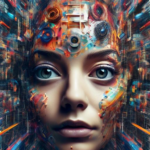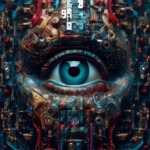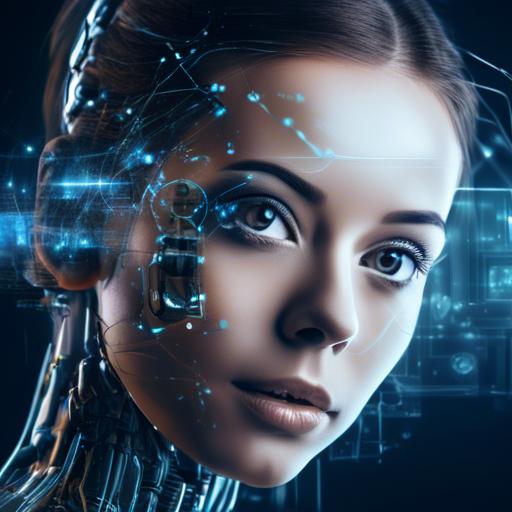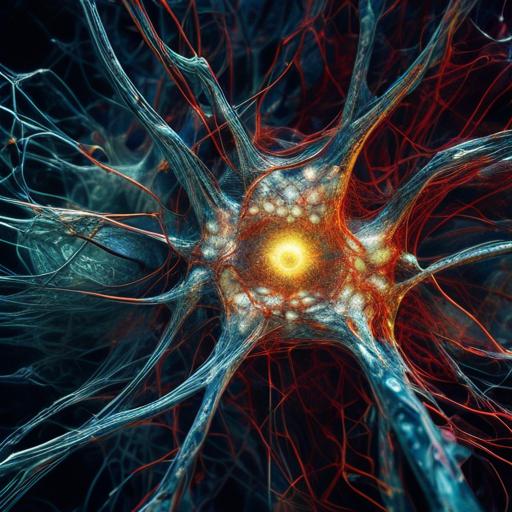Imagine you’re strolling through an art gallery, surrounded by stunning works that captivate your imagination. Some paintings seem to pulsate with emotion, while others challenge your understanding of reality. Now, what if I told you that a significant number of these masterpieces weren’t created by human hands but were instead born from the digital dance of algorithms? Welcome to the fascinating world of Generative Adversarial Networks, or GANs—an extraordinary leap in artificial intelligence that’s not just reshaping creativity, but redefining the boundaries of what’s possible. In this article, we’ll embark on a journey through this groundbreaking technology, demystifying its inner workings and exploring its transformative potential. So, let’s dive in and uncover how GANs are revolutionizing fields far beyond the realms of art, pushing us to reassess our relationship with machines and creativity alike.
Table of Contents
- Understanding GANs: The Basics Unveiled
- The Science Behind the Magic: How GANs Work
- Exploring Real-World Applications of GANs
- Benefits and Limitations: A Balanced Perspective
- Training Your GAN: Strategies for Success
- Ethical Considerations in the Age of GANs
- Future Trends: What Lies Ahead for GAN Technology
- Expert Tips for Mastering GAN Implementation
- The Conclusion
Understanding GANs: The Basics Unveiled
Diving into the realm of Generative Adversarial Networks, **commonly known as GANs**, is akin to exploring a dynamic dance between two neural networks. This captivating interaction results in a robust machine learning framework with immense potential. Originated by Ian Goodfellow in 2014, GANs have revolutionized how we conceive and implement artificial intelligence in creative domains.
At the heart of a GAN lies **two key components**: the Generator and the Discriminator. The Generator’s role is to create new data instances, mimicking the training data it’s been fed. Meanwhile, the Discriminator examines that data to determine its authenticity, distinguishing between real and generated data. This back-and-forth interaction compels both networks to improve synergistically.
**Key Features of GANs:**
- Highly adaptive to diverse datasets
- Capable of creating high-quality synthesized data
- Useful in a wide array of applications such as image generation, style transfer, and more
| Feature | Description |
|---|---|
| Dual Network Interaction | GANs employ both a Generator and a Discriminator in tandem |
| Unsupervised Learning | Primarily utilizes unlabeled data for training |
| High Fidelity Outputs | Produces outputs that closely mimic the real data |
The **algorithmic creativity** of GANs is unparalleled, making it a cornerstone in fields ranging from art generation to video game development. Artists and designers leverage GANs to create incredulous art forms, while developers use them to create sophisticated virtual environments. Furthermore, GANs find extensive applications in healthcare, aiding in the creation of high-resolution medical images for better diagnostics.
the elegance of GANs lies in their **ability to teach themselves** to get better over time. By constantly iterating between the Generator and the Discriminator, GANs grow smarter and produce increasingly realistic outputs. This makes them not just a tool of innovation, but a canvas of endless possibilities awaiting exploration.
The Science Behind the Magic: How GANs Work
Generative Adversarial Networks, commonly known as GANs, are one of the most fascinating innovations in the realm of artificial intelligence. At their core, they are composed of two neural networks: the **Generator** and the **Discriminator**, both of which engage in a dynamic and competitive relationship that drives the process of learning and creation.
In simple terms, here’s how it works:
- The **Generator** network’s role is to create new data instances resembling the training data.
- The **Discriminator** network’s function is to evaluate the authenticity of the data, differentiating between real instances from the training set and fake instances produced by the Generator.
This interaction can be likened to a game where the Generator strives to improve to fool the Discriminator, and the Discriminator continually enhances its ability to detect fakes. Over time, the Generator becomes remarkably proficient at producing realistic data.
Below is a simplified illustration of the GANs process:
| Step | Process |
|---|---|
| 1 | Generator creates fake data. |
| 2 | Fake data is passed to the Discriminator along with real data. |
| 3 | Discriminator distinguishes between real and fake data. |
| 4 | Feedback is provided to the Generator for improvement. |
| 5 | Cycle repeats, with both networks improving over time. |
One magical aspect of GANs is their applicability across various domains. They can generate high-quality images, enhance video game graphics, create artwork, write poetry, and even approximate how a certain drug might react with biological organisms. The implications are vast, and as GANs evolve, their accuracy and capabilities continue to expand.
Nevertheless, while the promise of GANs is boundless, it’s also important to consider the ethical and practical challenges they pose. Issues such as data privacy, misinformation, and the potential for malicious use must be addressed as we weave these powerful systems into the fabric of society. But with careful stewardship and innovative thinking, GANs hold the potential to transform industries and inspire new possibilities.
Exploring Real-World Applications of GANs
Generative Adversarial Networks have transcended the boundaries of theoretical research and have found diverse applications in the real world. One of the most captivating areas is in art and design. **Artists and designers** use GANs to create awe-inspiring visuals, paintings, and even fashion designs. By training GANs on a dataset of art pieces, they generate new, unseen artworks that maintain the essence of the original style. This marriage of technology and creativity is pushing the boundaries of what we consider to be ‘art’.
In the realm of **healthcare**, GANs have made a remarkable impact. Researchers employ these networks to enhance medical imaging, assisting in the detection and diagnosis of diseases. For instance, GANs can create high-resolution images from low-resolution scans, making it easier for doctors to identify early signs of conditions like cancer. This not only saves time but also significantly increases the accuracy of medical diagnoses.
**Entertainment** takes on a new dimension with GANs. The gaming industry has harnessed the power of these networks to build more life-like characters and immersive environments. They enable game developers to generate realistic textures and terrains that enhance the gaming experience. Additionally, GANs are instrumental in creating video content. They help animate and render complex scenes that would otherwise require enormous amounts of manual effort and time.
- Art and Design: Creating novel artworks and fashion designs.
- Healthcare: Enhancing medical imaging for better diagnosis.
- Entertainment: Developing realistic game environments and characters.
Another noteworthy application exists in the field of **data privacy and security**. GANs are used to generate synthetic data that mirrors real datasets without compromising privacy. This is particularly valuable for companies that need to maintain data privacy compliance but still wish to leverage data for analytical insights. Synthetic data modeling helps in testing software and training machine learning models while preserving user confidentiality.
| Field | Application |
|---|---|
| Art | Creating unique digital art pieces |
| Healthcare | Improving diagnostic imaging |
| Entertainment | Developing realistic game graphics |
| Data Privacy | Generating synthetic data |
Benefits and Limitations: A Balanced Perspective
Generative Adversarial Networks (GANs) have revolutionized the field of artificial intelligence, driving remarkable advancements in machine learning. Yet, while they hold immense promise, it’s crucial to weigh their benefits against their limitations to fully appreciate their impact.
Benefits of GANs:
- Creative Potential: GANs have opened up new avenues in creative domains such as art, music, and design. They can generate realistic images, compose music, and even create compelling pieces of artwork.
- Data Augmentation: In fields like healthcare and autonomous driving, GANs can create synthetic datasets that reinforce training, helping improve the performance and reliability of AI models.
- Anomaly Detection: By learning what ‘normal’ data looks like, GANs can effectively identify anomalies, which has applications in security, fraud detection, and quality control.
Limitations of GANs:
- Training Instability: Training GANs can be notoriously difficult and unstable, often requiring careful tweaking of hyperparameters and architectures.
- Data Dependency: GANs need large datasets to learn complex patterns accurately. Limited or low-quality data can result in poor performance and misleading outputs.
- Ethical Concerns: The ability of GANs to generate hyper-realistic images and videos raises concerns about deep fakes and the potential for misuse in spreading misinformation.
| Aspect | Benefit | Limitation |
|---|---|---|
| Creativity | Generates novel artistic works | Risk of creating misleading content |
| Data Requirements | Enhances training data | Needs large datasets |
| Application | Anomaly detection | High computational cost |
Understanding both the strengths and weaknesses of GANs allows us to harness their potential responsibly. By addressing their limitations, we can further unlock their capabilities and pave the way for innovative applications that benefit society.
Training Your GAN: Strategies for Success
Training a Generative Adversarial Network (GAN) can be a challenging but incredibly rewarding process. To set yourself up for success, it’s crucial to follow some key strategies designed to optimize performance and efficiency. Here are some expert tips to help you navigate through the process:
- Balance the Training Between Generator and Discriminator: One of the common pitfalls is letting either the generator or discriminator become too dominant. Use techniques like learning rate scheduling or adaptive learning rates to ensure both networks evolve at a similar pace.
- Use Proper Loss Functions: While the basic loss functions provided in many frameworks are a good start, experimenting with alternatives like Wasserstein loss or hinge loss can potentially yield better results. Tailoring the loss functions to your specific problem domain can significantly enhance the model’s performance.
- Augment Your Data: GANs thrive on diverse and abundant training data. Consider techniques such as data augmentation, noise injection, or even synthetic data generation to enrich your training dataset. The broader and more varied your data, the better your GAN will perform.
In addition to these strategies, regularly monitoring your training can provide essential insights into how your GAN is developing. Implementing the following monitoring techniques can be very beneficial:
- Use Visualization Tools: Tools like TensorBoard can help you visualize losses, outputs, and other key metrics in real-time. This can help identify issues early, such as mode collapse or vanishing gradients.
- Checkpointing: Save checkpoints of your model at regular intervals. This allows you to revert to previous versions if something goes wrong, saving you considerable time and effort.
Here’s a quick comparison of some commonly used techniques, their purposes, and recommended practices:
| Technique | Purpose | Recommended Practices |
|---|---|---|
| Learning Rate Scheduling | Balance training speed | Adjust rates based on validation loss |
| Wasserstein Loss | Improve stability | Use with gradient penalty |
| Data Augmentation | Enhance dataset | Apply random transformations |
Remember, GANs are sensitive systems requiring fine-tuning and care. This iterative process, laden with tweaks and adjustments, demands patience. However, by adhering to these well-tested strategies and continuously iterating, you can develop highly effective and innovative GAN applications.
Ethical Considerations in the Age of GANs
As we embark on the journey of understanding Generative Adversarial Networks (GANs), it is imperative to reflect on the **ethical implications** that accompany this groundbreaking technology. One of the primary concerns is **data privacy**. GANs require large datasets to train, often sourced from publicly available images, social media, or other online platforms. This poses a risk to individuals’ privacy, as personal data can be inadvertently exposed or misused.
Another significant issue lies in the potential for **misinformation and deepfakes**. GANs have the capability to generate highly realistic images, videos, and audio that are almost indistinguishable from real content. This makes it alarmingly easy to create and spread false information, with devastating consequences ranging from personal defamation to influencing public opinion and elections.
From an ethical standpoint, the **bias within AI models** is another area of concern. If the data used to train GANs contain biases, these models are likely to perpetuate and even amplify such biases. This can lead to unfair treatment and discrimination against certain groups, highlighting the need for more inclusive and representative datasets.
- Data Privacy: Risks of exposing personal information
- Misinformation: The role of deepfakes in spreading false content
- Bias: Amplification of existing prejudices in AI models
Moreover, when considering the **commercial use of GANs**, ownership and intellectual property rights become murky waters. If a GAN creates a piece of art, who owns the rights to it? The developer of the GAN? The person whose data was used to train the GAN? These questions open up a labyrinth of legal and ethical considerations that we are only just beginning to explore.
| Key Ethical Considerations | Potential Impacts | Mitigation Strategies |
|---|---|---|
| Data Privacy | Exposure of personal data | Stricter data collection policies |
| Misinformation | Proliferation of fake content | Robust fact-checking systems |
| Bias in AI | Discrimination | Diverse and inclusive datasets |
The responsibility falls on developers, policymakers, and society at large to navigate these ethical challenges thoughtfully. By actively addressing these concerns, we can harness the power of GANs in a way that is not only innovative but also responsible and fair.
Future Trends: What Lies Ahead for GAN Technology
As we cast our gaze toward the horizon of technological advancements, **Generative Adversarial Networks (GANs)** continue to captivate the imagination of experts and enthusiasts alike. This technology, which once seemed like the stuff of science fiction, is now poised to revolutionize numerous fields. Here are a few trends that suggest what the future might hold for GAN technology:
- High-Resolution Image Synthesis: GANs are rapidly evolving to create even more realistic and high-definition images. Future advancements are expected to push the boundaries, enabling the generation of images indistinguishable from reality, thus finding applications in cinema, gaming, and virtual reality.
- Healthcare Innovations: With the ability to analyze and generate complex medical data, GANs are on the brink of revolutionizing diagnostics, personalized medicine, and predictive healthcare. Imagine a future where AI helps in early detection of diseases by generating enhanced images and models from patient data.
- Content Creation and Entertainment: The entertainment industry is leveraging GANs to create new music, art, and storylines. We might soon witness a surge in AI-generated novels, scripts, and even virtual performers, pushing the creative boundaries further than ever before.
| Application | Potential Impact |
|---|---|
| High-Resolution Imagery | Enhanced virtual experiences |
| Healthcare | Improved diagnostics and treatment plans |
| Content Creation | New creative possibilities in entertainment |
Beyond these immediate applications, one intriguing development is the integration of GANs with other emerging technologies. Combining GANs with **quantum computing** could push the boundaries of what’s computationally possible, enabling faster and more complex data processing. Similarly, the fusion of GANs with **edge computing** might allow for real-time data generation and processing on local devices, enhancing efficiency and lowering latency.
The ethical implications surrounding GAN technology will also play a crucial role in its future trajectory. As GAN-generated content becomes more prevalent, establishing robust frameworks for authenticity and ethical use becomes essential. Addressing potential misuse while promoting innovation will be pivotal for the responsible growth of this transformative technology.
Expert Tips for Mastering GAN Implementation
Becoming proficient in Generative Adversarial Networks (GANs) can be quite the journey. With a little guidance and some expert tips, you’ll be on your way to mastering GAN implementation. Below are some valuable insights to help steer your efforts in the right direction.
- Understand the Architecture: Dive deep into the two primary components of GANs – the generator and the discriminator. The generator creates fake data, while the discriminator evaluates the authenticity. Their tug-of-war relationship helps both improve over time.
- Use Effective Loss Functions: The choice of loss function can significantly impact the training process. Consider experimenting with different loss functions like Binary Cross-Entropy, Wasserstein loss, and least squares to find the best fit for your specific application.
- Hyperparameter Tuning: Fine-tuning hyperparameters such as learning rates, batch size, and epochs plays a crucial role. Set up systematic experiments to track the impact of these changes on your GAN’s performance.
- Regularization Techniques: To prevent overfitting, apply techniques like dropout, label smoothing, and data augmentation. These strategies can enhance the generalization of your GAN model.
To help you get started, here’s a quick comparison table illustrating some influential techniques and their benefits:
| Technique | Benefit |
|---|---|
| Learning Rate Scheduling | Helps maintain stability and accelerates convergence. |
| Spectral Normalization | Ensures consistent training of the discriminator. |
| Batch Normalization | Improves gradient flow and stabilizes training. |
Remember, patience and persistence are key. GANs can be notoriously challenging to train due to their dynamic nature. Engage with the community, share your findings, and don’t hesitate to seek advice when encountering roadblocks.
The Conclusion
As we conclude our exploration of Generative Adversarial Networks (GANs), it’s clear that these innovative AI systems have the power to revolutionize the way we create and interact with technology. By pitting two networks against each other in a collaborative dance of creation and critique, GANs offer endless possibilities for artistic expression, data generation, and problem-solving. The fusion of imagination and innovation within GANs opens doors to new frontiers in the realm of artificial intelligence. Embrace the potential of GANs and let your creativity soar to new heights. The future is bright with endless possibilities when we harness the power of Generative Adversarial Networks.
































